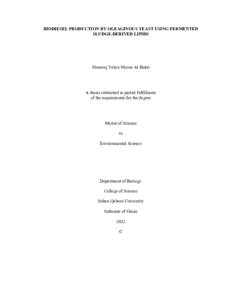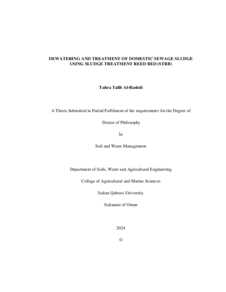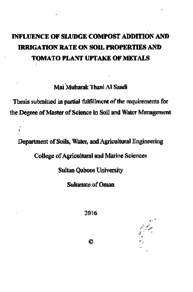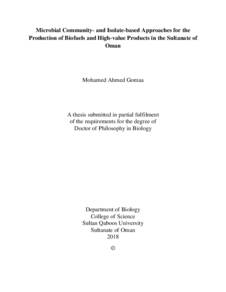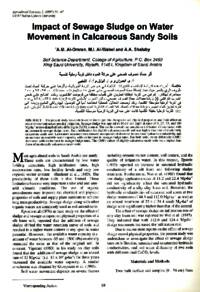وثيقة
Biodiesel production by oleaginous yeast using fermented sludge derived lipids.
الناشر
Sultan Qaboos University.
ميلادي
2022
اللغة
الأنجليزية
الموضوع
الملخص الإنجليزي
The overconsumption of fossil fuels to meet energy requirements is leading to the
inevitable depletion of the non-renewable resource and increase in environmental
concern. This has led to the impetus of searching for environmentally benign alternative
energy sources. Biodiesel is a renewable, non-toxic, and sustainable fuel alternative that
has gained an unprecedented increase in attention. Conventional first-generation
feedstocks (i.e., soybean and palm oil) have caused controversy due to competition with
food, large land requirements and deforestation. Oleaginous microorganisms are
emerging biodiesel feedstocks. However, the biodiesel production cost in this route is
uncompetitive with conventional vegetable oils due to the high cost of substrate utilized.
Secondary wastewater sludge was proven to be a low-cost, abundant, and sustainable
resource substrate for oleaginous yeast cultivation for lipid production and
transesterification to biodiesel. Al Ansab and Samail primary and secondary sludge were
analyzed in terms of their physiochemical properties and Al Ansab secondary sludge was
selected as the suitable substrate for Cryptococcus curvatus and Rhodosporidium
toruloides cultivation for lipid production. The thermal hydrolyzed pretreatment was
found to be most effective in releasing sludge organics (COD, carbohydrates, proteins),
in comparison to the raw, filtrate, and NaOH pretreatments. Lipid production experiments
demonstrated that R. toruloides comparatively enhanced growth and lipid accumulation
than C. curvatus; maximum biomass, lipid yield and lipid content for R. toruloides after
3 days of cultivation were 3.50 ± 0.05 g/L, 2.38 ± 0.05 g/L and 68.01 ± 0.004 % at pH
8.0, respectively. Further optimization experiments increased lipid accumulation by 12%
by optimizing process parameters; sludge concentration, pH, and inoculum load
conditions at 30 g/L, 5.0, and 15%, respectively. The quadratic model produced by RSM
was found to be significant in predicting the lipid content as the observed results were in
close agreement with the model-predicted results (R2 = 0.9718). The FAME's profile
indicated that both oleaginous yeasts demonstrated similar fatty acid characteristics to
conventional biodiesel feedstocks. Analysis of biodiesel properties showed that all
characteristics were in accordance with international biodiesel standards. Therefore, the
microbial lipids can be used for biodiesel application. The optimized conditions resulted
in biodiesel characteristics with enhanced cold flow properties due to the balanced ratio
of saturated to unsaturated fatty acids. Furthermore, cultivation of R. toruloides showed
effective COD, TKN and P removal efficiencies at 72 h (71.64, 56.21 and 69.93%,
respectively). R. toruloides also demonstrated the ability to produce carotenoids, which
serves as an additional value-added product. The larger implication of the study is to
reduce dependence on fossil fuels by diversifying the current energy scenario, as well as
enhance wastewater treatment and mitigate sludge management issues in the Sultanate of
Oman.
المجموعة
URL المصدر
قالب العنصر
الرسائل والأطروحات الجامعية

